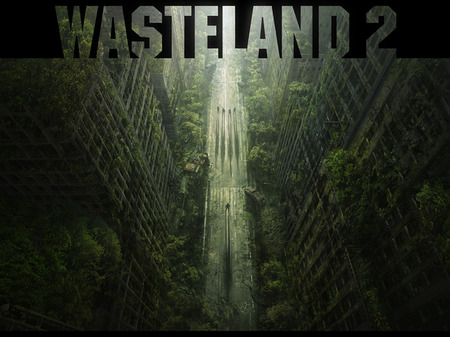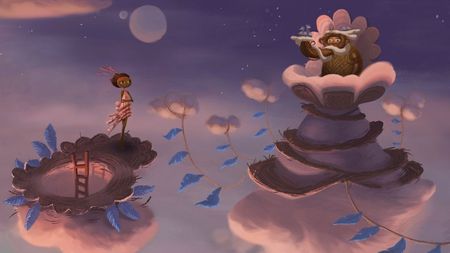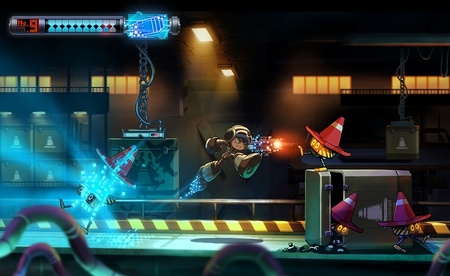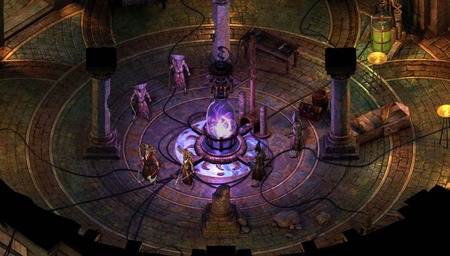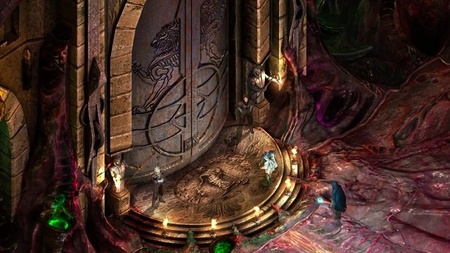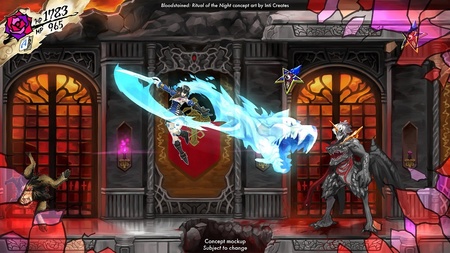The crowdfunding revolution has spurred on all manner of consumer products, from watches to videogames. As the available options for what space a game can occupy dwindle, sites like Kickstarter offer options for games that might not otherwise have a chance. Not every game meets its goal, but some titles rocket into the stratosphere, breaking new records only to be outdone by the next huge Kickstarter. If we look closely at games that have been fully funded, we can find some lessons on how game studios can succeed at crowdfunding. Here are some of the most funded games on Kickstarter with a look at exactly what made them so successful.
8. Wasteland 2
When Wasteland came out in 1988, almost a decade prior to Fallout, the computer gaming world fell in love with the original post-nuclear badlands. A sequel under Electronic Arts failed to get off the ground and the original team was never able to develop another game under the Wasteland banner until 2012. The Kickstarter launched with an unprecedented $900,000 goal, with team lead Brian Fargo promising to kick in another $100,000 if they could meet their funding. The Kickstarter ended up just shy of three million dollars, producing a game that ended up winning a handful of Game of the Year awards.
Wasteland 2’s success laid down the foundation for other spiritual and formal successors to classic games. The key move was reuniting much of the original team. Without a larger number of the people who made the original Wasteland such a success, potential backers would have been far more concerned about the quality of the end product. The presence of original creators motivates backers more than any other factor when it comes to funding either official or unofficial sequels.
7. Yooka-Laylee
After Rare’s departure from Nintendo’s hut, fans of the studio grew openly unhappy as it grew away from its former primary playground, the mascot-based 3D platformer. Microsoft was not especially interested in this genre and tasked Rare with projects like Avatars and various Kinect-related diversions. Ex-employees from Rare, eager to strike out on their own, founded Playtonic Games and introduced the world to Yooka-Laylee. What the title lacked in subtlety, it made up in nostalgia, selling people on a vision of a modern Banjo-Kazooie with similar characters and gameplay. Ending at over three million dollars, Yooka-Laylee was also, at the time, the fastest videogame Kickstarter to reach a sum of one million.
The Yooka-Laylee campaign was exceptionally well-managed from the beginning. All the right names were established at the pitch, a prototype was shown of the characters happily bouncing around their environment, and the game was announced for a bevy of systems (including the ailing Wii U, which is probably popular with many Banjo-Kazooie’s fans). Beyond all that, however, the key to its success was simply how shameless Yooka-Laylee was in its influences. This is not meant to cast aspersions, as clearly people were willing to buy what they were selling, but Playtonic chose to be overt about the title’s lineage rather than coy like many other spiritual successors, to the point of even calling the game a “Rare-vival” on the campaign headline.
6. Broken Age (Double Fine Adventure)
The grandfather of videogame Kickstarters, Doublefine Adventure (now Broken Age) was equal parts courageous, desperate and brazen. Beginning as a side note to better facilitate a documentary project, Broken Age came out of nowhere and planted a flag for videogames in the gold rush of crowd funding, offering backers the opportunity to fund a game without publisher interference (a problem well-known to fans of Double Fine). Studio head Tim Schafer set expectations low, but backing the project became about the principle of a new world for many gamers and the goal was quickly outpaced. The Kickstarter finished at $3.3 million and is notable for having the most backers of any game on this list.
It is no exaggeration to say that Broken Age was the first major game to find its flesh on Kickstarter. There was no roadmap for success, no other Kickstarters to study to figure out what not to do. This also worked to Double Fine’s benefit, as they were able to ride the zeitgeist, especially with their promises for the then-unnamed project to return to the classic genre of point-and-click adventures. Broken Age’s success owed its thanks to the optimistic vision of what independent development could do with true independence.
5. Mighty No. 9
With lamentations of Capcom’s continued mistreatment of Mega Man, it was only natural for Keiji Inafune to bring a new, decidedly coy version of the blue bomber to Kickstarter. Mighty No. 9 was pitched as being Mega Man at its roots, without ever directly saying that. The campaign let people’s imaginations run wild with the possibilities of what that could mean. The Kickstarter was an event, announced at a PAX panel in 2013, with people rushing to open up their wallets for Keiji Inafune and his team to make the game. Those fans supplied a base of nearly four million dollars before the campaign ended. Though controversial, Inafune also continued soliciting donations throughout development through other means for continued stretch goals.
Mighty No. 9 is the first clear example on this list of a hidden X-Factor in Kickstarter game development: spite. Spite fuels a lot of these campaigns far beyond what they ask for. It gets people talking about them on message boards, and it has them opening up their wallets as a means to show the license holder for the dead series they love that they messed up. Kickstarter campaigns like Mighty No. 9 are like the ill-advised public date to make your ex jealous, though ideally with less regret. Though many people are simply excited for the new game with familiar names attached, had there not been so much anger at Capcom for their apparent mishandling of Mega Man, the Kickstarted adventures of Beck and Call might have only barely squeaked past the finish line.
4. Project Eternity (Pillars of Eternity)
In 2012, Obsidian was in some trouble. Reeling from the cancellation of a major console project, there was growing concern about the future of the studio and its ability to continue delivering high-quality RPGs. Luckily, there were plans in place to launch Project Eternity (later known as Pillars of Eternity), a PC-only fantasy RPG in the vein of Baldur’s Gate. After launching the Kickstarter, the team went to lunch to defog, only to return and find themselves already halfway to their goal and scrambling to offer stretch goals. Pillars of Eternity ended up dollars short of four million, exceeding their original goal by over three times.
Obsidian has cultivated a reputation as the underdog, often besieged by the demands of big publishers to release brilliant games under tight time restrictions, resulting in well-loved games with a number of major problems. This notoriety for creating flawed gems gave Obsidian, and Pillars of Eternity, a leg up when it came to ask fans to back their development. There had been a proven track record of publishers messing with Obsidian’s final projects, such as the infamous Knights of the Old Republic 2, where the game shipped incomplete with massive swaths of content missing over Obsidian’s strong objections. The implicit argument for Pillars of Eternity was that they could finally make a game people wanted on their own terms, a prospect that excited backers.
3. Torment: Tides of Numenera
When Planescape: Torment released in 1999, no one knew how significantly it would influence role-playing games for the next decade and a half. Sequel plans were repeatedly stymied by investors until inXile launched a funding campaign for Torment: Tides of Numenera. Hewing close to what they promised with Wasteland 2, inXile sought to provide a spiritual sequel to a game they were never able to get a second bite at years ago. The campaign smashed through stretch goals and set a new record for videogame Kickstarters, crossing the finish line at over four million dollars.
Torment: Tides of Numenera was launched before Wasteland 2 released, providing a sticky situation for the developer. It brought up worries that occasionally come up in Kickstarter, centering around a need for developers to prove themselves before asking for more money. Of course, the logistics of this are rarely quite so simple, and Project Director Kevin Saunders candidly explained the need to crowd fund the project when they did. This genuine community engagement helped greatly, carrying the momentum of the successful start to a record-breaking finish.
2. Bloodstained: Ritual of the Night
When Castlevania director Koji Igarashi left Konami, there were a lot of unanswered questions about whether the series would ever find footing again. The latest title, Lords of Shadows 2, was considered a huge flop both financially and critically, and the classic 2D games seemed to have died with Igarashi’s influence at the company. When he announced he was going to Kickstarter, complete with a slick pitch video of Igarashi wandering around a gothic castle and smashing wine glasses, fans were more than eager to contribute. Finishing at $5.5 million, Bloodstained: Ritual of the Night smashed expectations of how much a Kickstarted game could make, even when the stated goal was simply to demonstrate interest to publishers.
Bloodstained hits a lot of the notes mentioned above: nostalgia, appealing to a seemingly dying genre, including a major name whose tenure at Konami gave him the reputation of an underdog, and good old spite. At the time the Bloodstained campaign launched, anger at Konami had reached a fever pitch over their handling of Kojima Productions and people were desperate to find ways to stick it to them without having to boycott Metal Gear Solid V. With perfect, though likely unintentional, timing, Bloodstained arrived and became the tip of the spear, hitting all the right notes for backers to not only provide their own money, but also to evangelize the project to anyone who would listen.
1. Shenmue III
In the videogame industry, there are pipe dreams and there are impossibilities, and Shenmue III had always veered toward the latter. Announced at Sony’s E3 2015 conference, the final episode in the Shenmue trilogy had been long-anticipated, with decade-long fan campaigns dedicated to bringing the story to a close. The initial rush to back the project was so enthusiastic that it brought down Kickstarter temporarily, though it quickly became the fastest videogame campaign to reach one million dollars. It met its relatively high funding goal of two million within eight hours, ending up at over $6.3 million dollars when the campaign officially closed. Even still, some fans saw this number as a disappointment, hoping to reach a goal of ten million for even more features and expansions.
It is extremely unlikely that Shenmue III attained this number simply off fans of the series. Though they were both successful, the original Shenmue games were far from the hits Sega needed, and the reasoning on never continuing the series was actually fairly sound. It simply cost too much to make for a strong return on the investment. What happened with Shenmue III was that it presented a reality where the impossible became possible, where games that had no shot to exist and no right to try still somehow made it to fruition. This acted as an aphrodisiac for the campaign, generating fervor far beyond that of spite or getting the band back together. It cannot be understated how much the idea of Shenmue III matters to anyone who has been a fan of something that simply was not commercially viable and had no chance of continuing on.
Despite Shenmue III being the ending of the series, it is very likely the beginning of something bigger for Kickstarted games.
Imran Khan is an Atlanta-based writer who tweets @imranzomg.
